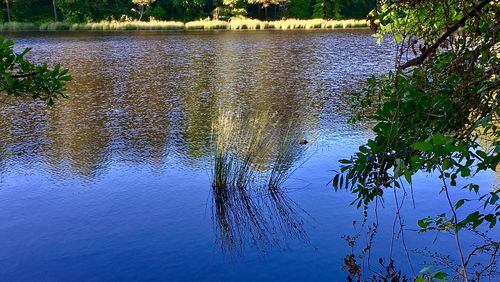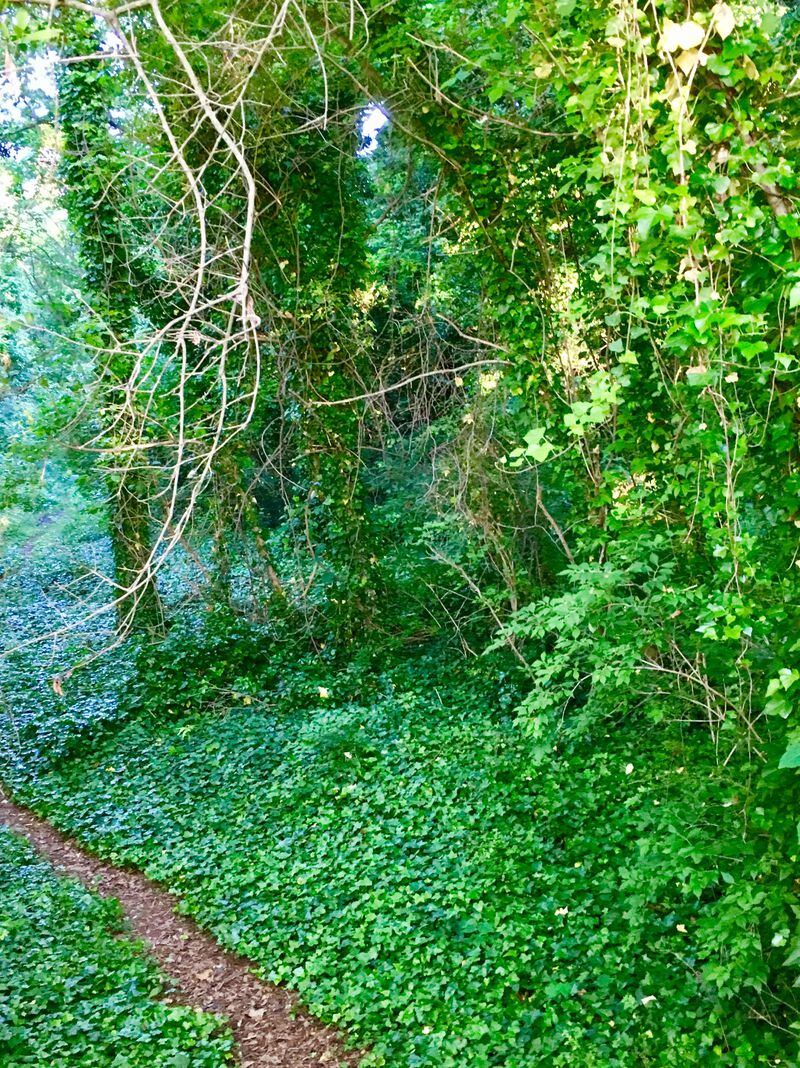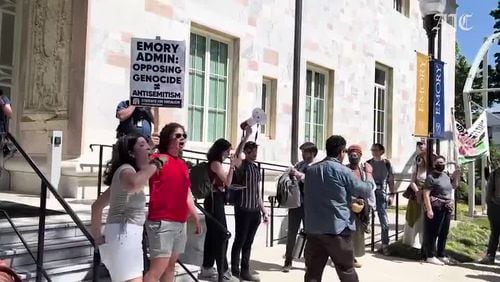The city of Decatur was awarded an $11,452,000 loan by the Georgia Environmental Finance Authority Tuesday. The money will purchase 22.08 acres of the United Methodist Children’s Home property.
Located in the eastern or rear portion of the total 77-acre tract, the land includes the forested area that mostly borders Katie Kerr Drive (named for the wife of former UMCH Superintendent Bramwell C. Kerr), the lake, a brief ribbon of creek and the 1.5 acre Decatur Kitchen Garden.
“It’ll be a natural open area for public enjoyment,” said City Manager Peggy Merriss. “We might remove some invasive species and add trails, but basically what you see today is what you’ll see in the future.”
The loan was officially awarded to the city’s Public Facilities Authority, created earlier this year to pursue specific funding for purchasing the land. It’ll be paid over 30 years with a 1.70 percent interest rate, likely much lower than the rest of the property. The money, Merriss said, will get repaid from the city’s general revenue fund.
The PFA and city commission are expected to approve the loan during a scheduled commission meeting, 7:30 p.m. July 17 at City Hall, 509 North McDonough Street. Set for the same day, the city will sell bonds for the remaining 55 acres, with Merriss anticipating an interest rate of anywhere from three percent to just under four percent.
Decatur put a contract for $40 million on the property in April and is scheduled to close in late August. The UMCH, which has owned the land since 1873, will vacate its 80 residents and 60 employees by the end of September or October.
RELATED: Methodist Home site Decatur purchased holds historical, natural gems
MORE: Decatur buys a big piece of green space, Methodist Children's Home acreage
During a recent interview John Cerniglia, UMCH vice president for development, said that it’s still undetermined where the home is moving though it almost certainly will remain in DeKalb County. The organization is seeking a leasing arrangement in an office complex, where possibly all its administrative operations are housed in a single building.
The 80 residents, all in either family housing or independent living, will move into what Cerniglia describes as “traditional residential housing,” probably market-rate apartments. It’s intended, he added, that the apartments will also be in DeKalb and very close to UMCH’s new administrative base.
Meanwhile the city will create a conceptual master plan for the site, culled largely from community meetings beginning early next year. The meetings will take four to six months, and the final plan should finish about a year from now.
“At this point all we know is that [in the remaining 55 acres] we will use the playing fields and the gymnasium,” Merriss said. “The first step is getting the fields more playable by upgrading the sod. I don’t know when that will start, but once it does the fields will be out of commission for nine months to a year.”
Conserving the rear 22 acres will please environmentalists, who consider the property a hidden gem.
Kathryn Kolb, master naturalist and director of Atlanta-based EcoAddendum, spent an hour hiking through the area in May. She pointed out its wetlands, a prairie-like meadow, a native forest in recovery with a thick canopy shielding the dense urban environment just beyond. She also identified a chorus of ten migratory birds surrounding the lake, which sports an intricate network of beaver dams.
“I look around here,” Kolb said at the time, “and this could be the most diverse eco system in metro Atlanta.”
About the Author







